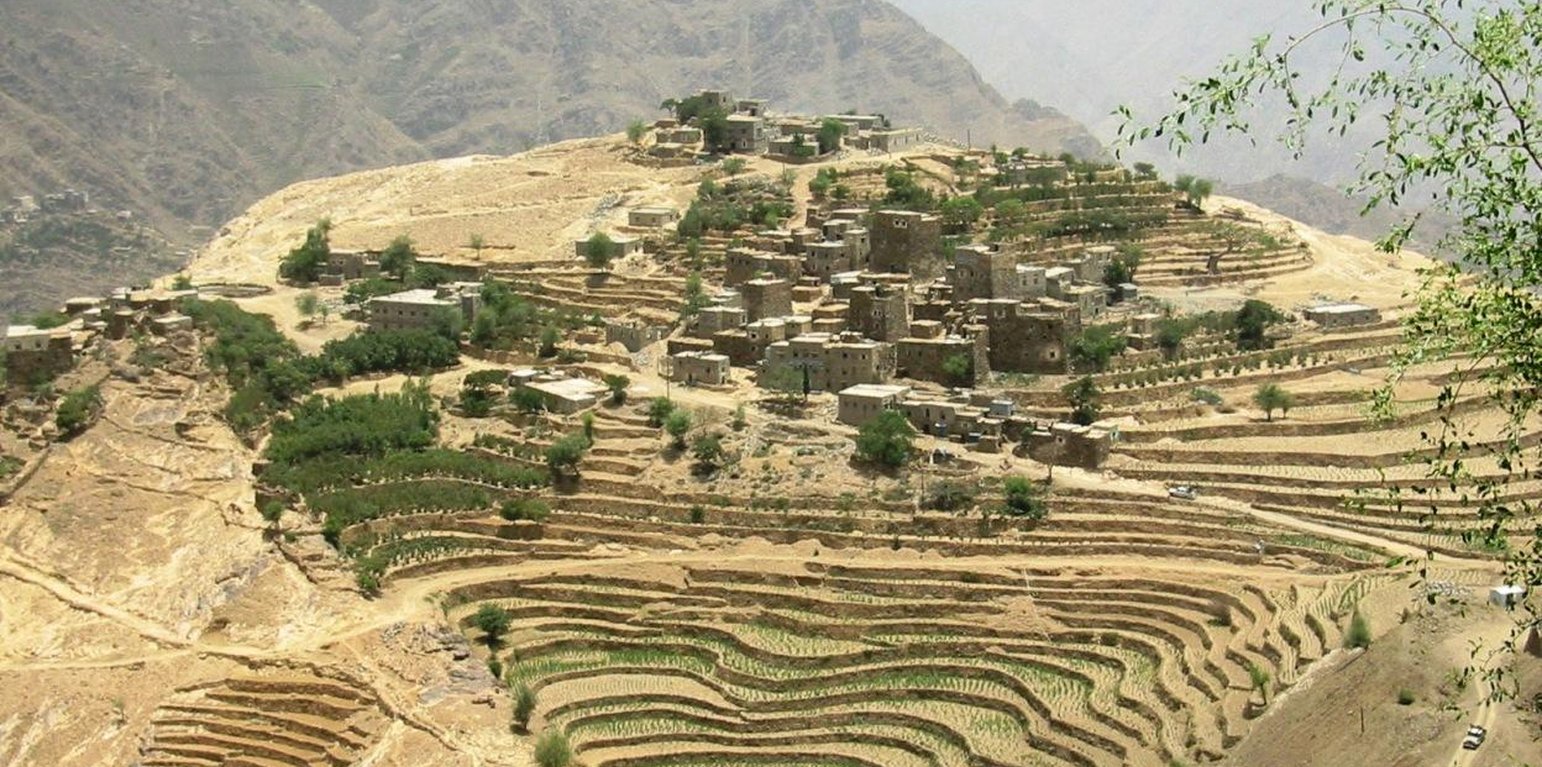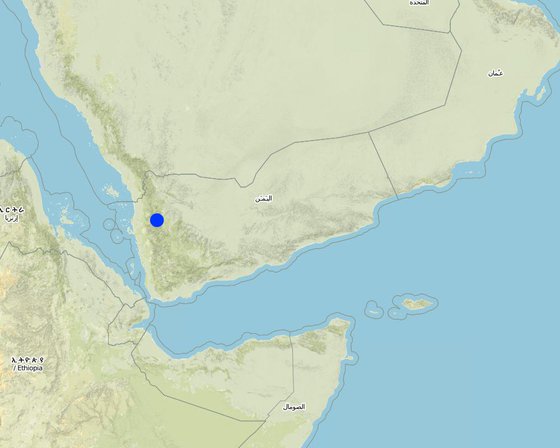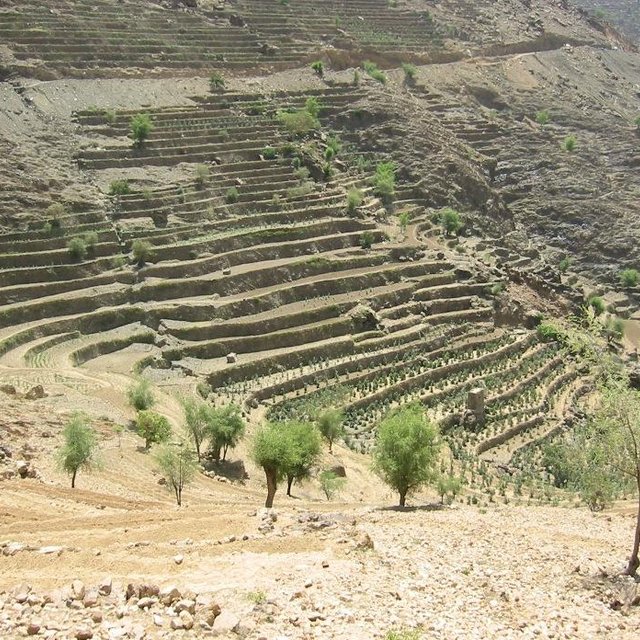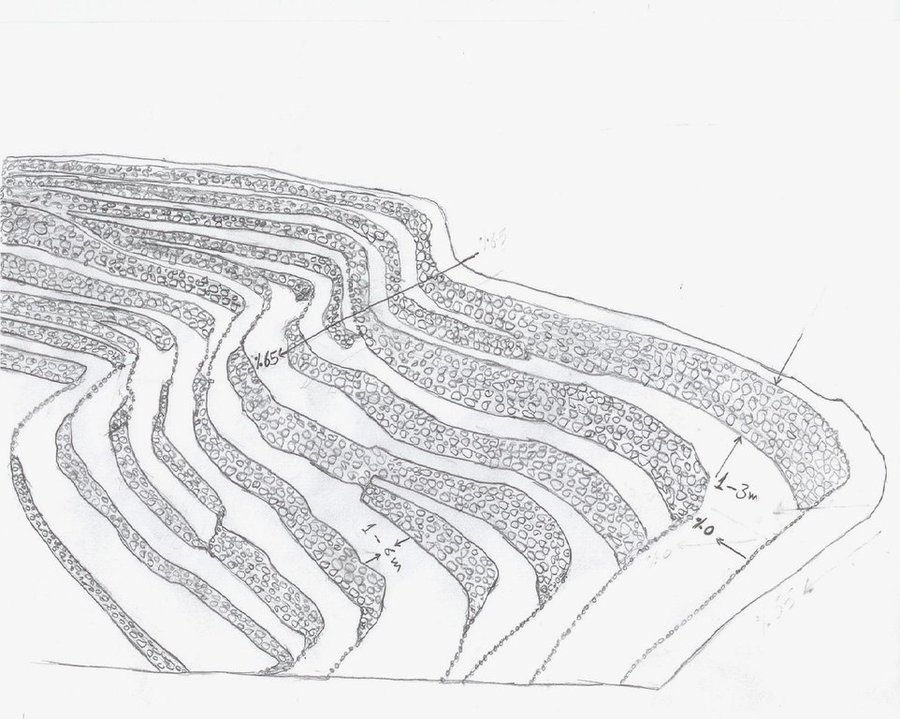



The Yemeni farmer challenged the nature cruel and adopted to cope with the needs and requirements, including the construction of agricultural terraces utilizing all the resources available in the region, where he worked first on the extraction of soil located on the slopes of the mountains and booked by building a wall of stones around where were collected and brought stones from different places. Walls were built in very geometric creativity very well designed so that they work to minimize the risk of soil erosion and increase the use of water runoff without damages to the established terraces so through the construction of terraces along contour lines and making outlets in each terrace to drain excess water.
The process of building terraces using stones according to the contours, which works to prevent soil erosion and erosion, as well as help to increase soil moisture as a result harvest runoff, which leads to meet the needs of crop water and thereby increase production.
The main objective of building terraces is to increase production. The soil depth at the beginning of the establishment of the stands to be very shallow and increasing soil depth as a result of increasing deposits the soil.This process is booked by increasing the height of the wall that range between 1-3 meters, and a width runway between 1-6 meters As for the length of the runway It is 5 - 80 meters according to the contour line, which runs on reserve deposits and protect the soil from erosion.. Finally terraces are planted with annual crops mainly cereals crops, as well as perennial trees such as coffee, diamond, Qat and other perennial trees.
The terraces of the projects long-term where you need a long time to build due to the use of hands in the construction process as a result you cannot use the mechanisms, for maintenance operations in view of the building stands on the regions of steep and where the rate of runoff high result of heavy rains in a short time in addition to Regression factor that leads to increase the speed of the flow of water, which operate on a cliff erosion terraces in the event of lack of maintenance, which makes the process of ongoing maintenance is an urgent need to ensure the preservation and sustainability of the stands.

Location: Kahlan Afar, Hajah Governorate, Yemen
No. of Technology sites analysed:
Spread of the Technology: evenly spread over an area
In a permanently protected area?:
Date of implementation: more than 50 years ago (traditional)
Type of introduction







| Specify input | Unit | Quantity | Costs per Unit (USD) | Total costs per input (USD) | % of costs borne by land users |
| Labour | |||||
| Extraction of soil | ha | 1.0 | 2500.0 | 2500.0 | 100.0 |
| Collecting stones | ha | 1.0 | 1162.8 | 1162.8 | 100.0 |
| Build a wall to establish a terrace | ha | 1.0 | 558.0 | 558.0 | 100.0 |
| Equipment | |||||
| Tools | ha | 1.0 | 46.5 | 46.5 | 100.0 |
| Animal traction | ha | 1.0 | 186.0 | 186.0 | 100.0 |
| Total costs for establishment of the Technology | 4'453.3 | ||||
| Total costs for establishment of the Technology in USD | 4'453.3 | ||||
| Specify input | Unit | Quantity | Costs per Unit (USD) | Total costs per input (USD) | % of costs borne by land users |
| Labour | |||||
| Plowing along contour lines | ha | 1.0 | 50.0 | 50.0 | 100.0 |
| Repairing damaged walls | ha | 1.0 | 100.0 | 100.0 | 100.0 |
| Equipment | |||||
| Tools | ha | 1.0 | 30.0 | 30.0 | 100.0 |
| Animal traction | ha | 1.0 | 50.0 | 50.0 | 100.0 |
| Tools | ha | 1.0 | 18.6 | 18.6 | 100.0 |
| Total costs for maintenance of the Technology | 248.6 | ||||
| Total costs for maintenance of the Technology in USD | 248.6 | ||||
As a result of the infiltration process
reduction of sediments